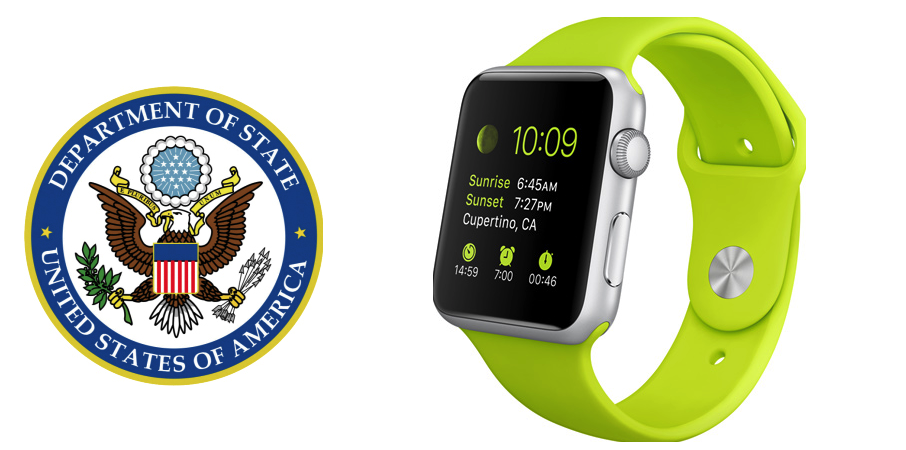 The 3D printing industry is exploding, ripe with opportunity, a garden just waiting to be sown with innovation. Nearly all of the big guns are getting in on it from HP to Microsoft, with plenty of announcements, press releases flying, and general hoopla. From Apple? Crickets. But that’s their typical modus operandi: infuriating silence, as they make the world wait.
The 3D printing industry is exploding, ripe with opportunity, a garden just waiting to be sown with innovation. Nearly all of the big guns are getting in on it from HP to Microsoft, with plenty of announcements, press releases flying, and general hoopla. From Apple? Crickets. But that’s their typical modus operandi: infuriating silence, as they make the world wait.
The Department of Defense for the U.S. isn’t being quiet at all though, as they announce that they’ve got Apple on their team, along with almost equally impressive names such as Boeing and Harvard, which will make up a new consortium. The subject is flexible, wearable sensors which in this project are to be built by the Flexible Hybrid Electronic Institute.
The marketplace for such devices is growing, and of course Apple is the go-to for the smartwatch, so you can see their place in this latest assignment. Generally just called ‘wearables’ for short, it would make sense that the level of efficiency they offer would be attractive for the government to consider–and especially the department of defense.
We’ve reported on these types of innovations a number of times, associated with apparel, 3D printed tracking devices/bracelets for places like hospitals, and more. The key is in the level of customization that’s available, obviously, as well as the idea that many of these items are smart and can morph as required, depending on the environment. They can also be made very quickly–and affordably so.
The idea on the table currently is for these wearables to be developed in line with military uses such as uniform linings, devices for placement in areas like ships, vehicles, and aircraft, as well as for use in monitoring various structures.
“I’ve been pushing the Pentagon to think outside our five-sided box and invest in innovation here in Silicon Valley and in tech communities across the country,” Defense Secretary Ash Carter said in prepared remarks on Friday. “Now we’re taking another step forward.”
Future places where you could see this current project move into though, also would again be health centers and hospitals–for instance, the consortium may develop it to benefit the elderly in medical settings as sensors.
 This isn’t just a budding idea on the parts of those participating, as the Flexible Hybrid Electronic Institute is a large consortium consisting of 162 members, some of whom see this idea for 3D printing wearable devices evolving into even more civilian uses.
This isn’t just a budding idea on the parts of those participating, as the Flexible Hybrid Electronic Institute is a large consortium consisting of 162 members, some of whom see this idea for 3D printing wearable devices evolving into even more civilian uses.
The current project is extremely well funded to the tune of over $171 million in total. The current agreement between the government and the private companies involved is that the US will put in $75 million over five years while $90 million plus will be contributed by the other entities, to include some of that coming from local governments.
The U.S. government is certainly no stranger to the benefits of 3D printing. Wearables represent just one more area they’ve become interested in due to its obvious potential benefits for the military. We’ve reported on previous military uses for the technology in terms of general sustainability issues for remote military situations to 3D printers on Navy ships, and more.
The headquarters for this consortium is in San Jose, sanctioned by the current administration as they have worked to bring numerous areas of manufacturing back to to life, with 3D printing playing a large role–just as it is with the STEM agenda also placed forth by President Obama.
How do you see participation by Apple contributing to such a project as this? Discuss your thoughts on the current project going on in this consortium in the 3D Printed Wearables forum over at 3DPB.com.
Subscribe to Our Email Newsletter
Stay up-to-date on all the latest news from the 3D printing industry and receive information and offers from third party vendors.
You May Also Like
Precision at the Microscale: UK Researchers Advance Medical Devices with BMF’s 3D Printing Tech
University of Nottingham researchers are using Boston Micro Fabrication‘s (BMF) 3D printing technology to develop medical devices that improve compatibility with human tissue. Funded by a UK grant, this project...
3D Printing Webinar and Event Roundup: April 21, 2024
It’s another busy week of webinars and events, starting with Hannover Messe in Germany and continuing with Metalcasting Congress, Chinaplas, TechBlick’s Innovation Festival, and more. Stratasys continues its advanced training...
3D Printing Webinar and Event Roundup: March 17, 2024
It’s another busy week of webinars and events, including SALMED 2024 and AM Forum in Berlin. Stratasys continues its in-person training and is offering two webinars, ASTM is holding a...
3D Printed Micro Antenna is 15% Smaller and 6X Lighter
Horizon Microtechnologies has achieved success in creating a high-frequency D-Band horn antenna through micro 3D printing. However, this achievement did not rely solely on 3D printing; it involved a combination...






























